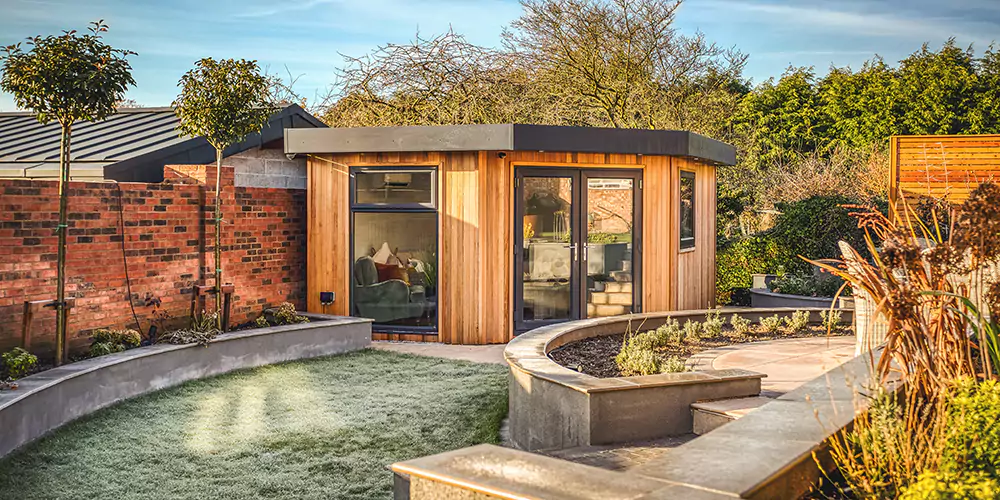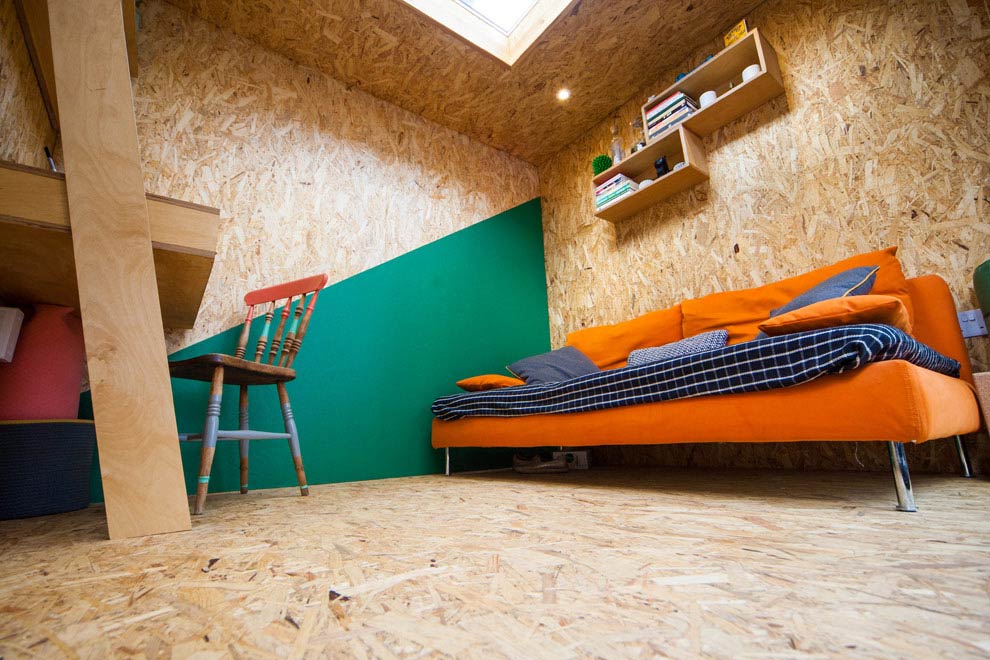In the case of building garden rooms or conservatories, outhouses, garden offices or extensions the notion of "change of use" plays an important role in determining if planning permission is required. Here are the key aspects to be considered when it comes to planning permission related to change of use: Change from Residential to Non-Residential Use:
In most cases, planning permission will be required to convert non-residential buildings (such as garages and agricultural structures) to residential areas or gardens offices. This is because there could be a change in use class.
Garden Rooms: Living Space
The use of a room within the garden to function as an independent living space (e.g. guest house, rental unit) is considered a change in the usage. It is essential to obtain planning permission in order to make sure that the building is in compliance with the standards for residential use.
Business Use:
You might require permission to plan to utilize a garden space or conservatory for commercial purposes like an office or location of business that has frequent employees or guests. This is due to the potential impact on the neighboring area including noise, parking and traffic.
For Community or Educational Use
Planning permits are required to permit the conversion of a garden-building into a communal or educational space (such an auditorium, classroom, meeting room or auditorium). The local authority evaluates the area's potential and impact on the surrounding area.
Impact on local infrastructure:
Planning permission is typically required to permit any modification in use that is likely to have a major impact on local infrastructure, e.g. roads drainage, public services and roads. The decision will be made by the local authority for planning during the application procedure.
Dual Use
Planning permission is required to define and regulate the various uses of the property.
An increase in footfall, traffic, and revenue:
If the proposed change in use is likely to boost the amount of traffic or footfall (e.g., converting the garden into a small retail space) the planning permit is required to consider any potential impact on the surrounding area.
Building Regulations compliance:
While not a matter of planning permission, any alteration in usage must conform to construction regulations that address safety, health and energy efficiency standards. It is of particular importance for conversions into habitable spaces.
Environmental Impact:
Planning permission will be required for any changes to the development that may impact the environment. For instance, converting an agricultural field into residential space. The application may require an environmental evaluation.
Community and Amenity Impact
A crucial aspect to consider is how the changes will impact the community's amenities and the area's character. If you plan to convert the garden into a cafe, for instance you must obtain planning permission. This will ensure the plan is in line with the local community plans and maintains local facilities.
Designated Areas
In areas designated as conservation zones, National Parks (AONB) or Areas of Outstanding Natural Beauty, changes in use are subject to more stringent controls, to preserve the character of the region. In these cases, planning permission is required.
Local Planning Policies
Local planning authorities have distinct guidelines regarding changes of usage, and they can differ significantly. It is important to read these guidelines to determine the requirements for changes and the criteria that must be fulfilled.
For a brief overview the planning approval process is typically needed for any significant change of the use of the garden room conservatory, outhouses, garden offices or extension. This is to ensure that the new use is suitable for the location and is compatible with local and national planning policy. Additionally, it will address any possible impacts on the environment or community. Early consultation with the local authority responsible for planning is crucial to determine the specific requirements for the project and obtain approvals. Read the most popular how to lay decking on grass for blog advice including garden office hertfordshire, costco outbuildings, 4m x 4m garden room, outhouse building, composite garden rooms, garden room planning permission, garden room, gym outhouse, costco garden office, garden rooms and more.

What Type Of Permits Are Required To Construct Garden Rooms And Other Structures?
Planning permission can be subject to the environmental impact of conservatories, garden rooms and outhouses. Here are some of the most important environmental factors that you need to consider: biodiversity, wildlife, and other natural resources.
If the proposed structure is likely to affect wildlife habitats within your region, like hedgerows, trees and ponds then you will need permission to plan the project. An assessment of the surrounding environment could be necessary to assess and limit the impact on biodiversity.
Habitats And Species That Are Protected
If the location is home to protected species (e.g., bats and newts, etc.)) or within or near protected habitats (e.g., Sites of Special Scientific Interest : SSSI), planning permission is crucial. It is important to take specific steps to safeguard these species.
Tree Preservation Orders:
The planning permission must be obtained if the proposed structure will involve the removal of trees, or the alteration of trees that are protected by TPOs. Local authorities will assess any impact and may demand the replacement of trees or mitigation measures.
Risk of flooding and Water Management Risk and Water Management
Planning permission is needed to build near the shoreline or in flood-prone areas. Flood risk assessments (FRAs) are required at times to make sure the structure does not increase flood risk and has adequate drainage.
Sustainable Construction Practices:
Sometimes, planning permission is required to allow the use and implementation of sustainable building materials as well as methods. It is crucial to think about the efficiency in energy use of materials, their insulation, and the carbon footprint they leave.
Drainage of surface water runoff
Impact of new structures on drainage and surface runoff are important environmental issues. Planning permission assures that the proper drainage systems are in place to stop flooding or waterlogging.
Stability of the soil and stability of the land:
This includes potential issues like subsidence or erosion of soil, especially in sloped areas. This includes potential issues like soil erosion or subsidence particularly on sloped areas.
Air Quality
Planning permission is required for any development that has the potential to affect air quality in a local zone, like those near industrial areas or main roads. It ensures air pollution levels remain within acceptable limits, and that mitigation measures are in place.
Noise Pollution:
Planning permission is required for any garden space that or any extension to it, is likely generate significant noise. The local authority must assess the level of noise, and any potential impact on neighbors as well as the surrounding environment.
Waste Management:
A proper waste management plan throughout and after construction is essential. Planning permits allow for sufficient waste disposal, recycling and environmental impact minimization.
Energy Efficiency
Planning permission could contain conditions for energy efficient technologies, such solar panels or high-performance glass. This will reduce the impact of the building on the environment.
Environmental Regulations
Environmental regulations, such as the UK Environmental Protection Act must be adhered to by any development. Planning approval assures that all standards are met in addition to the development being environmentally sustainable.
The planning permission granted for a garden office outsidehouse, conservatory, or extension must consider many environmental impacts. Consult the local authority for planning as early as you can during the planning stage to ensure you understand the particular requirements. Have a look at the most popular cabin furnace for website info including best electric heater for cabin, garden rooms in St Albans, best heater for log cabin, composite garden office, outhouse buildings, outhouse building, Tring garden rooms, costco garden room, garden rooms, garden office electrics and more.

Location Restrictions: What Permissions Are Required For Garden Rooms As Well As Other Structures?
If you're planning to construct a garden room, conservatory outhouse, extension, or garden office, the location restrictions will determine if planning permission is necessary. Here are the most important criteria for the location of your property: proximity to boundaries:
A structure that is located within 2 meters of the boundary of a property must not exceed 2.5 meters high. If the height exceeds the limits set by the law, a planning permit is needed.
Front of the property:
Planning permission is usually required for structures that are built on the front of a house's principal elevation (the side that faces the front) because permitted development rights don't allow for extensions that go forward.
Right-hand side of property:
If the side extension extends beyond the existing wall, it will often need permission for planning.
Rear of the property:
Size and height restrictions apply to rear extensions, including gardens. If they exceed permitted development limits the planning permission is needed.
Designated Areas
In National Parks, World Heritage Sites and Areas of Outstanding Natural Beauty there are more stringent regulations. Planning permission is required for any new structure of any size.
List of Buildings
Properties that are listed buildings are subject to strict rules. Any construction, modification, or addition will require planning consent and approval of listed buildings regardless of the site.
Green Belt Land:
The construction of green belt land is heavily restricted to protect open space. Most often any alteration or construction that is major requires a permit.
Zones that are prone to flooding:
If the property is an elevated risk of flooding, then there are extra regulations applicable. This is to ensure that any new construction doesn't add to the risk of flooding. It is possible to get planning permission or a flood analysis.
Urban vs. Rural Settings
In urban areas, the rules differ from those found in rural zones. Rural properties may be more flexible with regards to restrictions regarding the size and position of outbuildings. This is a huge difference.
Highways, Public Rights of Way and Public Rights of Way
The structure may need planning permission in order to prevent obstruction of views, access or security if it is close to roads, highways or other rights-of-way for public use.
Shared Ownership or Leasehold Land:
If the property is leasehold or are part of a shared ownership plan further authorization from the freeholder, or the managing entity could be necessary, and planning permissions may still be required based on the local laws.
Adjacent to Other Structures
If the structure being built is being constructed next to existing buildings or structures, particularly those on neighboring property, planning permission could be needed to ensure the structure does not have a adverse impact on neighbouring structures or land.
To obtain advice on your particular property's conditions and the location, it's recommended to contact the local planning authority. Local laws can impact regulations, so it's important to ensure compliance with all restrictions. Have a look at the top my outhouse for blog advice including garden outhouses, costco outhouse, ground screws vs concrete base, garden room planning permission, garden rooms in St Albans, out house, garden rooms hertfordshire, what size garden room without planning permission uk, garden room permitted development, garden room planning permission and more.
